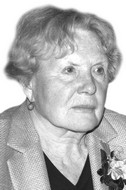Age-specific sport progress trajectories profiled by somatic and special working capacity rates versus competitive accomplishments in swimming sport
Фотографии:
ˑ:
Dr.Hab., Professor N.Zh. Bulgakova1
Dr.Hab., Professor O.I. Popov1
Postgraduate G.G. Ferreira2
1Russian State University of Physical Education, Sport, Youth and Tourism (GTSOLIFK), Moscow
2Fort Lauderdale, United States
Objective of the study was to analyse the age-specific sport progress trajectory design models with the progress profiled by the relevant performance, fitness and physicality test rates versus the competitive accomplishments in the modern swimming sport. Subject to the study were the nation-strongest 11-17 year-old male swimmers (n=1400 plus) for the period of 1962 to 2010, with variations of their core physicality and functionality rates (including the strength rates) being subject to a special analysis. The anthropometrical characteristics of the sample were obtained by the common methods, and the age-specific progress rates of the swimmers were mined in the FINA (International Swimming Sport Federation) records of the world-strongest swimmers. An exponential equation was used to approximate the years-long variations in the swimmers’ performance/ progress rates and accomplishments. The key findings of the study are as follow: as verified by the success histories of the elite swimmers, the age-specific competitive progress rates have notably changed for the last few decades. The growing ages of the finalists in the top-ranking international events and the top-ten world-strongest swimmers shall be interpreted rather as the recent progress in the sport longevity than a longer training period required to train an elite swimmer.
Keywords: age-specific progress, somatic rates, special working capacity, age-specific competitive progress.
References
- Bulgakova N.Zh., Popov O.I. Vozrastnaya dinamika i biologicheskaya zrelost pokazateley fizicheskogo razvitiya i spetsialnoy rabotosposobnosti, limitiruyuschikh skorost plavaniya [Age dynamics and biological maturity of physical development and special performance rates, limiting swimming speed]. Novye issledovaniya, 2009, no. 2 (19), P. 97.
- Bulgakova N.Zh., Popov O.I., Partyka L.I. Plavanie v XXI veke: prognozy i perspektivy [Swimming in the 21st century: forecasts and prospects]. Teoriya i praktika fiz. kultury, 2002, no. 4, pp. 29-34.
- Verkhoshanskiy Y.V. Ob optimalnom upravlenii protsessom stanovleniya sportivnogo masterstva [On optimal management of sportsmanship building process]. Teoriya i praktika fiz. kultury, 1969, no. 10, pp. 2-6.
- Vorontsov A.R. Periodizatsiya mnogoletney podgotovki yunykh plovtsov – programma dolgosrochnogo razvitiya yunykh sportsmenov [Periodization of long-term training of junior swimmers - program of long-term development of junior athletes]. Plavanie – III. Issledovaniya, trenirovka, gidroreabilitatsiya [Swimming - III. Research, training, hydrorehabilitation], St. Petersburg, 2005, pp. 194-207.
- Guberman Sh., Gordon S., Skvortsov Y. Prognozy rezultatov sorevnovaniy po plavaniyu [Forecasts of swimming competition results]. Sport za rubezhom, 1980, pp. 13-15.
- Kiseleva A.S. Gigienicheskoe obosnovanie otsenki fizicheskogo razvitiya gorodskikh shkolnikov v sisteme populyatsionnogo monitoringa. Dis. kand. med. nauk [Hygienic rationale for physical development rates of urban schoolchildren in population monitoring system. PhD. diss. abstract]. Nizhny Novgorod, 2014, 155 p.
- Platonov V., Bolshakova I. Forsirovanie mnogoletney podgotovki sportsmenov i Yunosheskie Olimpiyskie igry [Stimulating long-term training of athletes and Youth Olympics]. Nauka v olimpiyskom sporte, 2013, no. 2, pp. 37-42.
- Platonov V.N., Bulgakova N.Zh., Vorontsov A.R. Postroenie protsessa mnogoletnego sovershenstvovaniya. Glava 28 [Building longterm improvement process. Chapter 28]. Sportivnoe plavanie: put k uspekhu: v dvukh kn. [Sports swimming: way to success: in 2 books]. Moscow: Sovetskiy sport publ., 2012. Kn. 2, pp. 197-252.
- Popov O.I. Zakonomernosti dinamiki sportivnykh rezultatov elitnykh plovtsov na etapakh mnogoletney podgotovki [Regularities of dynamics of sports results of elite swimmers at different long-term training stages]. Sbornik trudov uchenykh RGAFK [Collected Works of RSAPC Scientists]. Moscow: Fizkultura, obrazovanie, nauka publ., 2000, pp. 63-67.
- Avlonitou E. Somatometric variables for preadolescent swimmers. J Sports Med and Phys Fitness, 1994. Vol. 34, no. 2, pp.185-191.
- Carter L., Ackland T. Kinanthropometry in aquatic sports: A study of world class athletes. Champaign: Human Kinetic, 1994 (Sport science monograph series, Vol. 5).
- Individual Times Search. USA Swimming. Available at: http://www.usaswimming.org
- Lang M., Light R. Interpreting and Implementing the Long Term Athlete Development Model: English Swimming Coaches’ Views on the (Swimming) LTAD in Practice. International Journal of Sports Science & Coaching, 2010, vol. 5, no. 3, pp. 389-424.
- Sokolovas G. Participation of elite swimmers: From USA swimming’s all-time top 100 times. Coaches Quarterly, 2002, vol. 8, pp. 1-5.



 Журнал "THEORY AND PRACTICE
Журнал "THEORY AND PRACTICE